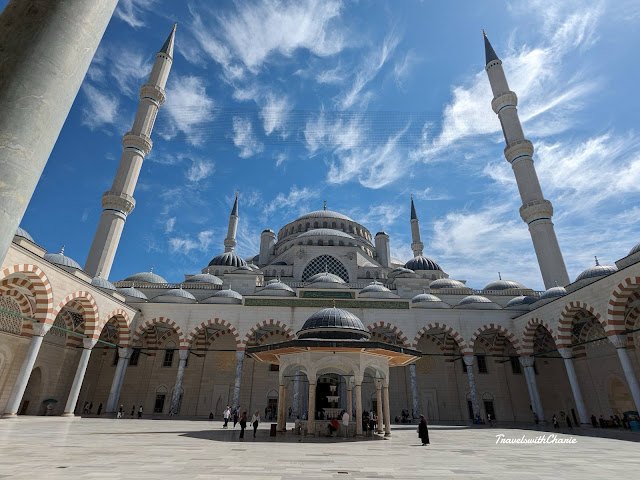Grand Çamlica Mosque, Istanbul
Çamlica Mosque stands on Çamlica Hill in Üsküdar, a district on the Asian side of Istanbul. It is the biggest mosque in Turkey with a capacity of 60,000+ worshippers and may accommodate up to a 100,000 people as an emergency shelter in case of an earthquake. The mosque was designed by two female architects, Bahar Mizrak and Hayriye Göl Totu, who won the design competition for the mosque. Çamlica Mosque was inaugurated in 2019.
The Mosque has six minarets (representing the 6 articles of Islamic faith), one of only three mosques in Turkey with this number of minarets.
The women architects wanted a “female friendly” mosque hence they included a separate place for women for the ablution or cleansing ritual before prayer and a child care facility and playground so the children could be cared for while the adults are praying.
Among other things in the Mosque are a library, an art gallery and studio, a conference hall, the Museum of Islamic Civilizations and a parking garage for 3,500 vehicles. Notice the shoe racks in the background behind the arched portals.
Mosque visit etiquette for women:
1. Dress modestly with your body well covered.
2. Wear a shawl to cover your hair. (If you don’t have one, every mosque usually has scarves to borrow).
3. Remove your shoes before entering the prayer hall. There’s a designated area with shoe racks where you can leave your shoes. (Or you can bring a plastic bag to store your shoes in it and carry it with you.)
4. In many mosques, only men are allowed in the main prayer hall during service. Women have a separate prayer area.
To the right of the mihrab is the minbar where the Imam (prayer leader) delivers his sermon during Friday prayers.
Courtyard of Çamlica Mosque
View of Istanbul on the European side and the Bosphorous.
How to get there:
A new metro station stop near the Mosque has been under construction since 2022. In the meantime, check rome2rio.com for transportation options and detailed instructions. You can also check Get your Guide or Viator for tours that cover the Asian side of Istanbul.
Opening hours and prayer times:
The Mosque is open 24 hours a day. Here’s the link to the Istanbul prayer time schedule: https://namazvakitleri.diyanet.gov.tr/en-US/9541/prayer-time-for-istanbul
*****
Images by TravelswithCharie








